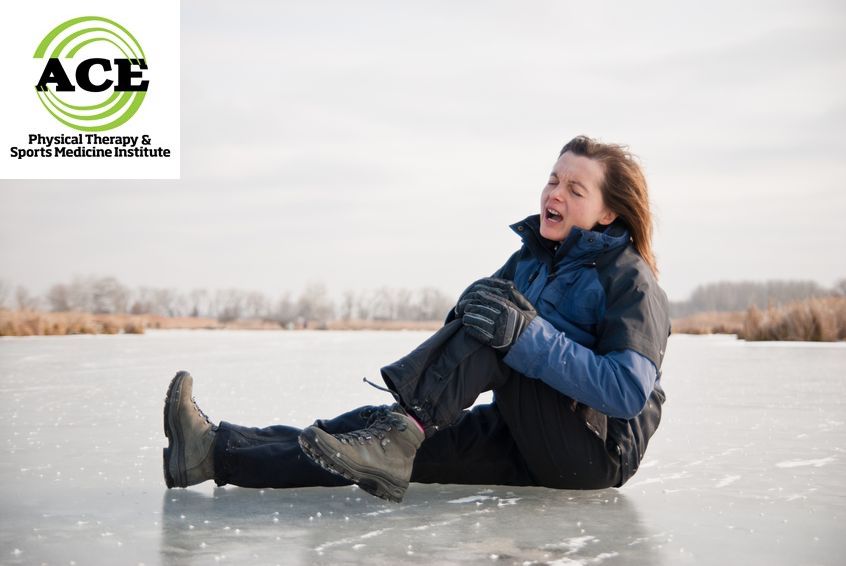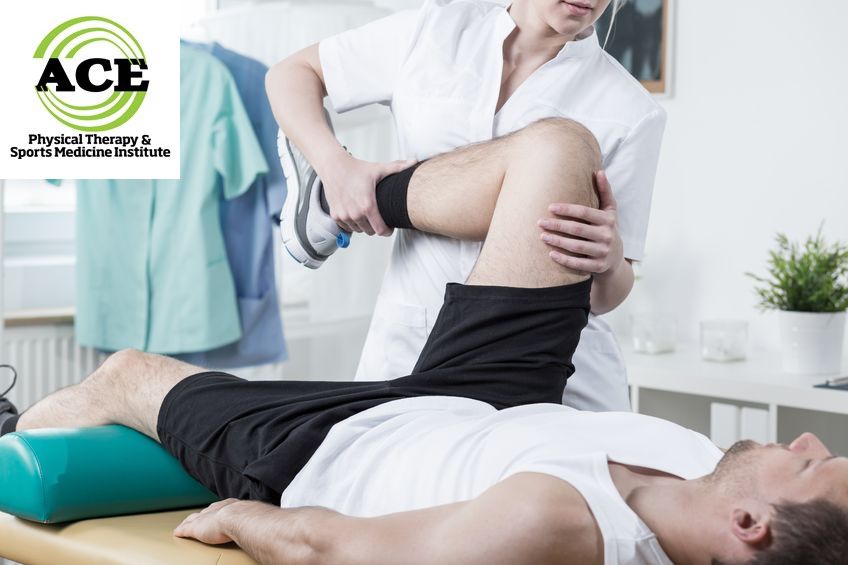MINDSET AND AN ACL INJURY
Mindset and an ACL injury
by ACE Physical Therapy and Sports Medicine Institute
Tid Bits of Info.
- Rehabilitation from ACL reconstruction takes approximately the same amount of time regardless of the graft choice.
- Greater than 200,000 ACL surgeries are performed yearly in the U.S.
- Greater than 60% of all ACL injuries include damage to other stabilizing structures in the knee.
- Women are more prone to ACL tears and most occur without contact.
- Physical Therapists specializing in sports rehabilitation are able to help with the physical and mental aspects of an ACL injured athlete.
Athletes that suffer ACL (anterior cruciate ligament) injuries always fear the worst and hope for the best when they receive the positive diagnosis of an ACL rupture. This fear and hope is indicative of the entire rehabilitation process. Recovering from an ACL injury involves both physical and psychological components. This injury almost always requires surgery to stabilize the knee joint which allows the athlete to return to “action.” The mindset of the athlete before, during and after reconstruction plays a vital role in recovery.
Recovery from ACL injury surgery and reconstruction of the injured ligament takes a minimum of 6-9 months. In most cases, the injury requires more than one year of rehabilitation time. Therapists have traditionally focused upon the role of the athlete’s mindset for the long term process of rehabilitation, but recent studies indicate that the focusing on the acute or short term time period before and shortly after surgery might be as important in the outcome of the patient.
There are more than 200,000 ACL injuries in the US every year. Recently, there is a push in the medical community to promote pre-surgery and acute post-operative rehabilitation education of what the athlete should expect. During the pre-operative time period, it is important to regain normal knee motion, reduce pain and swelling, restore most of the lower extremity strength and regain normal ADL function. When this occurs, the patient has been shown to be better prepared to handle the surgery and performs better during the post-operative rehabilitation process. During the first 2 months of the post-operative time period, the same process must be followed with the same goals as the pre-operative process. When the patient experiences a decrease in pain and swelling, an increase in strength and motion their ability to perform ADLs increases significantly. The ability to perform ADLs with normalcy leads to a positive attitude towards the final outcome of the rehabilitation process.
There are a number of factors that can lead to a positive outcome in the rehabilitation process of an athlete that suffers an ACL injury. Goal setting and maintaining a consistent formal rehabilitation program have proven to be some of the most important factors that determine the final outcome. Unfortunately, there is fear factor that must be overcome during the rehabilitation process. It is reported in some studies that more than 40% of athletes that have been “cleared” to compete have not been able to return to their pre-injury status. The physical condition of their core and lower extremities is equal on both sides but their ability to perform does not return to their pre-injury level. These athletes often report that they are timid or have a fear of re-injury that keeps them from performing at a high, pre-injury level.
Physical Therapy is the best answer for these patients. Physical Therapists that specialize in orthopaedic and sports rehabilitation are trained to handle the physical and mental aspects of the rehabilitation process. They utilize a variety of modalities, hands on techniques and therapeutic exercises and activities that help to restore the functional capabilities of the injured athlete. The primary goal is to restore full motion, reduce swelling and pain and enhance core and lower extremity strength. The athlete will progress per the surgeon’s protocol and the patient’s capabilities. The patient will need to develop strength and neuromuscular control throughout his core and lower extremities. When the development is sufficient, the program will shift to a sport specific and agility protocol. The athlete needs to perform various training routines that include agilities, plyometric jumping and sport specific movements that begin the “re-education” process of the entire musculoskeletal system. As the athlete progresses their program and successfully achieves positive results, they develop more confidence in the repaired knee’s capabilities. The sport specific training is the key to their return and being able to do it without the fear of re-injuring their knee.
An ACL injury that requires surgery to reconstruct it can be successfully rehabilitated providing the physical and mental concerns of the athlete are addressed during the process. When an athlete has an ACL reconstruction surgery, they will most assuredly have doubts and fears that they might never be able to perform at their pre-injury level. If the patient’s rehabilitation program addresses the physical limitations and the mental part of healing from the very beginning, the athlete has a more positive outlook on their final outcome.
Read more articles on our main website blog at: ACE-pt.org/blog
Vist our main website at www.ACE-pt.org


